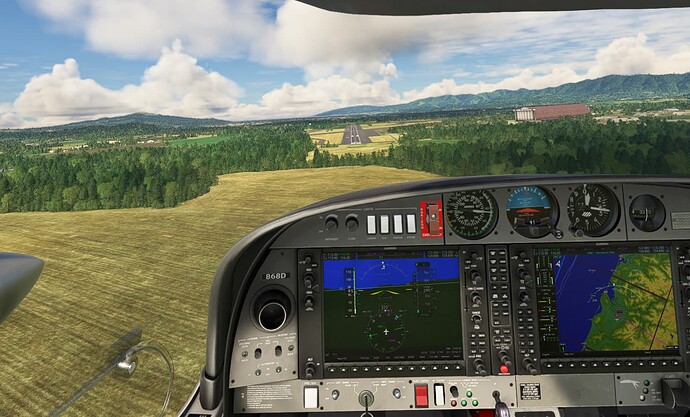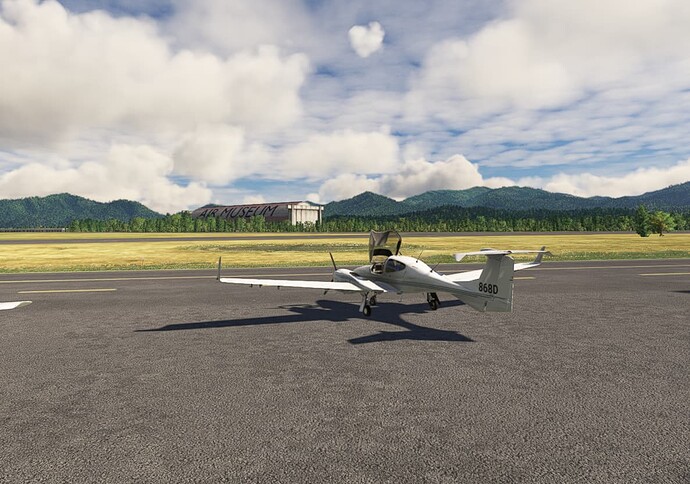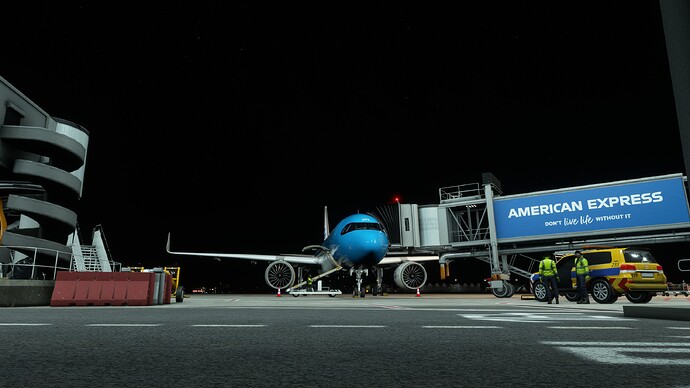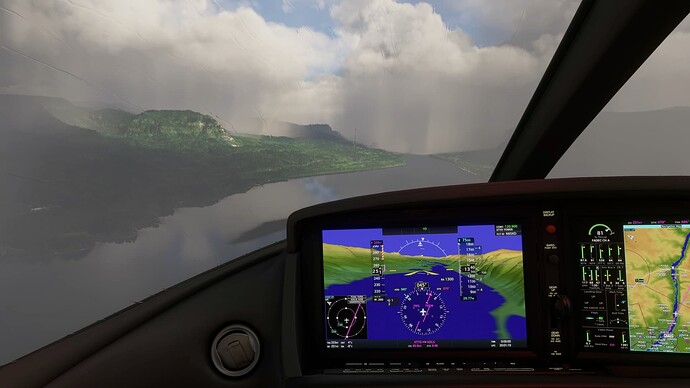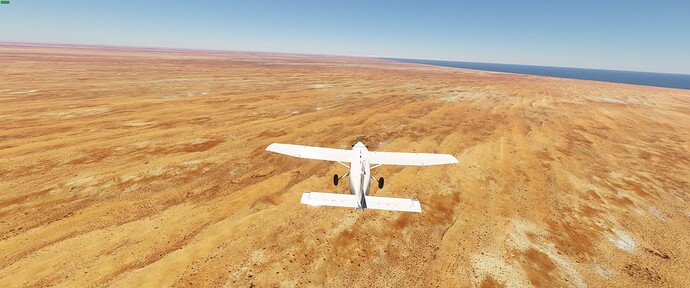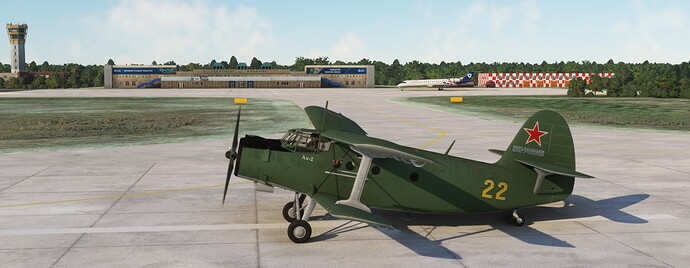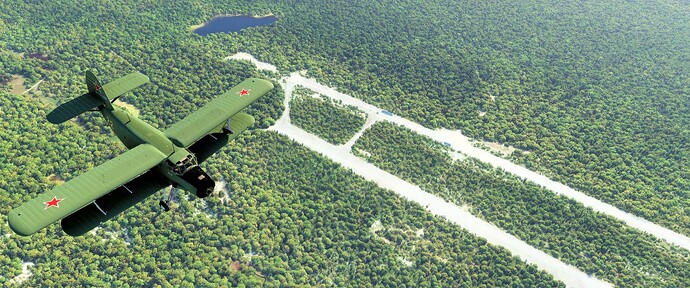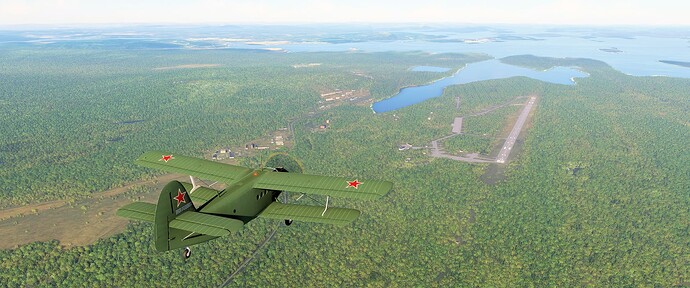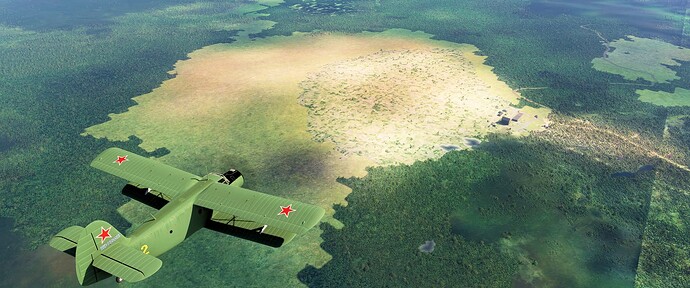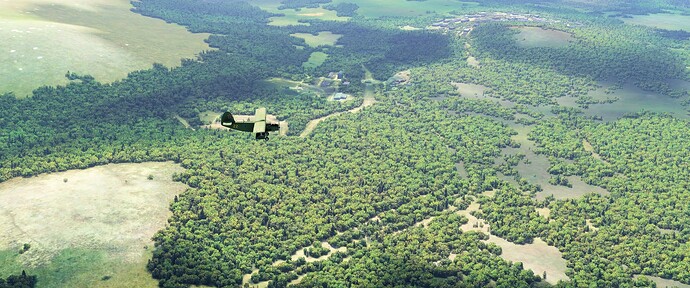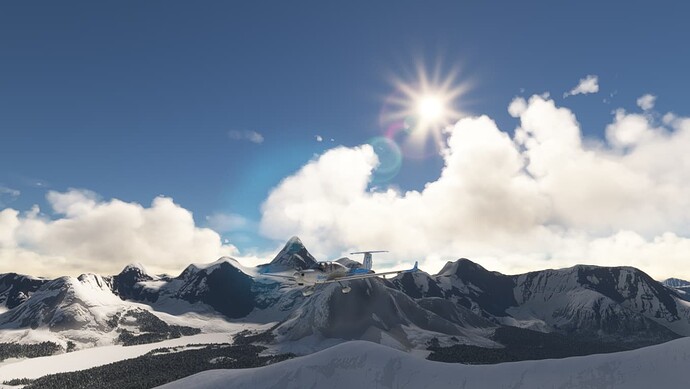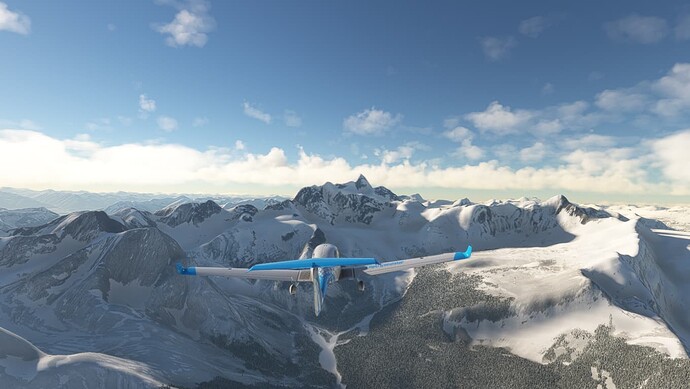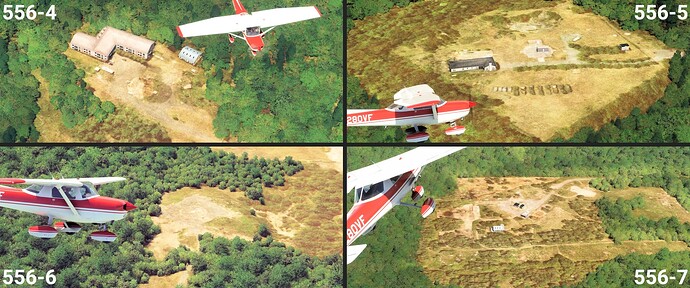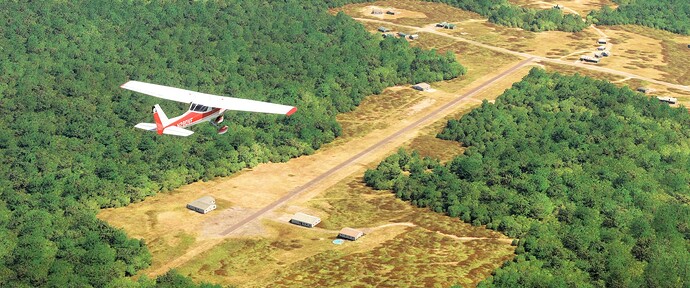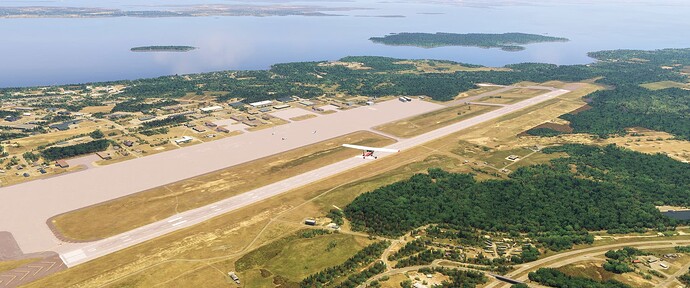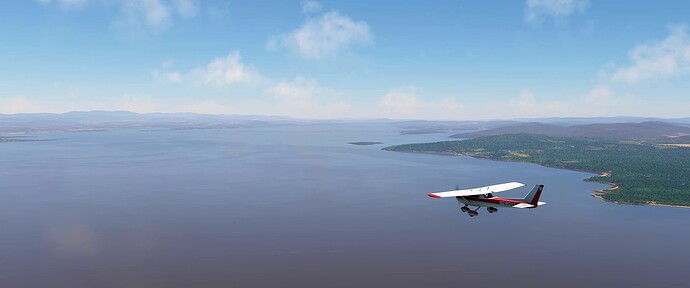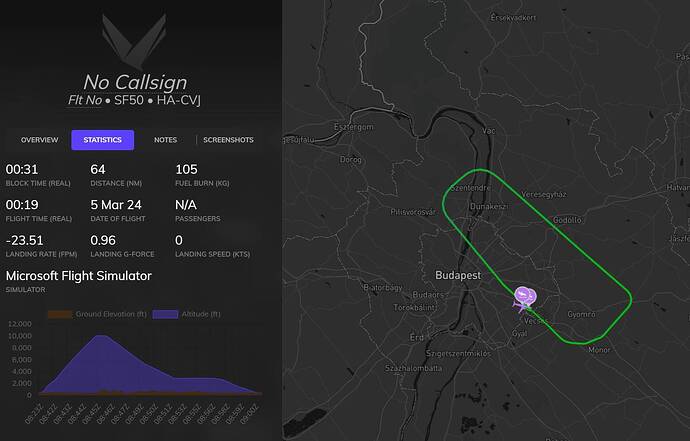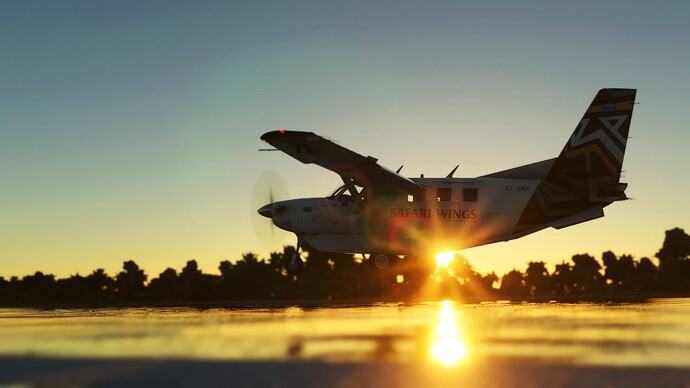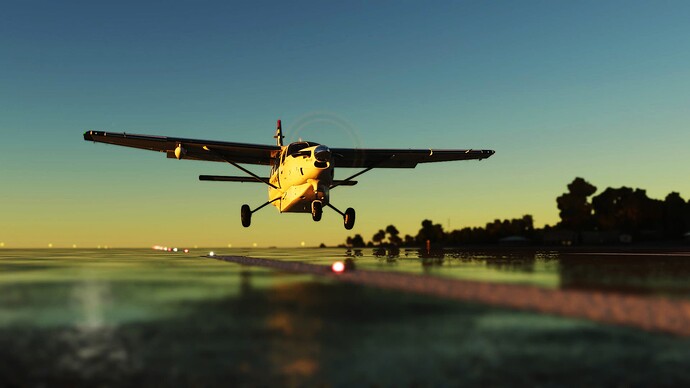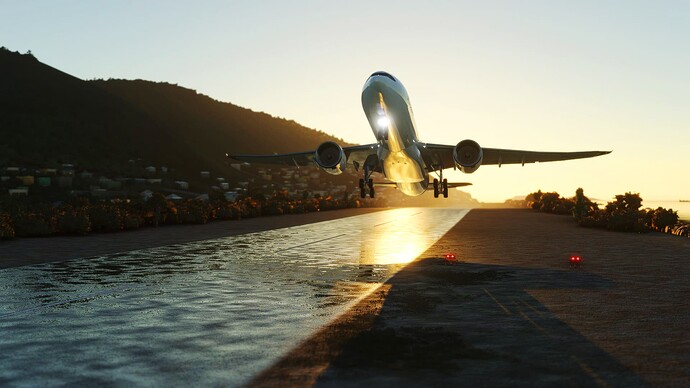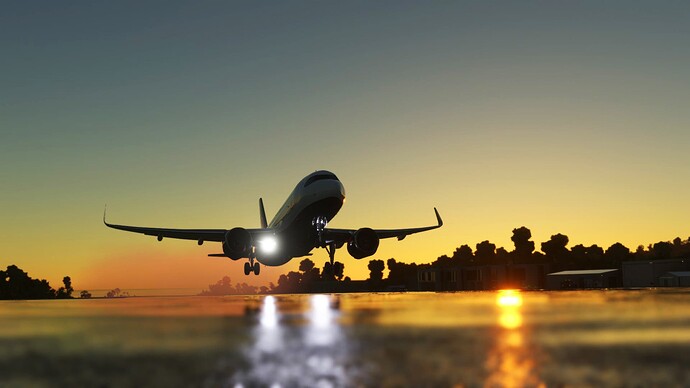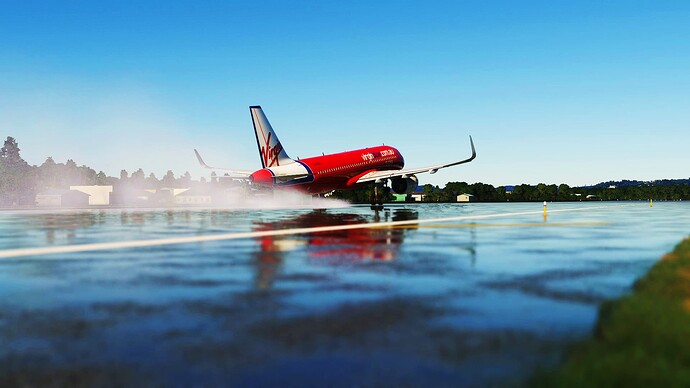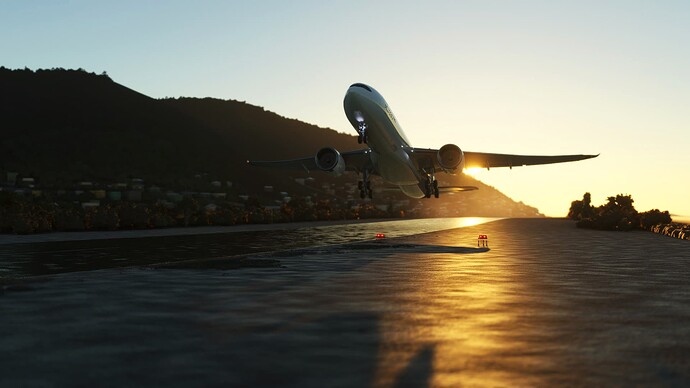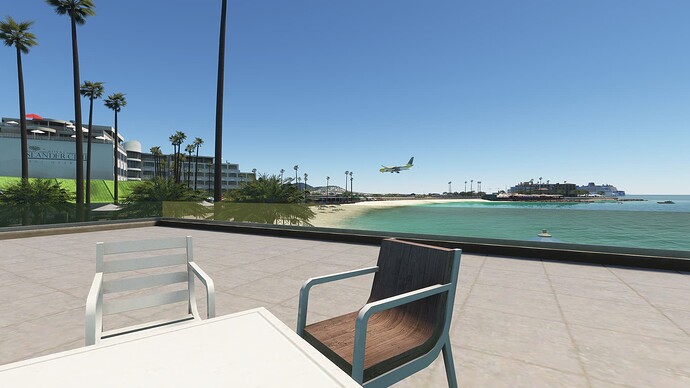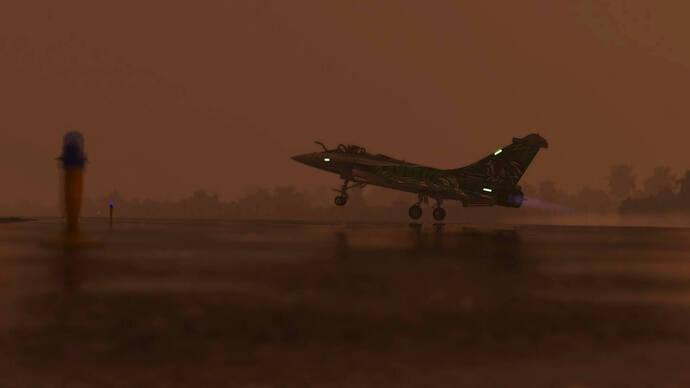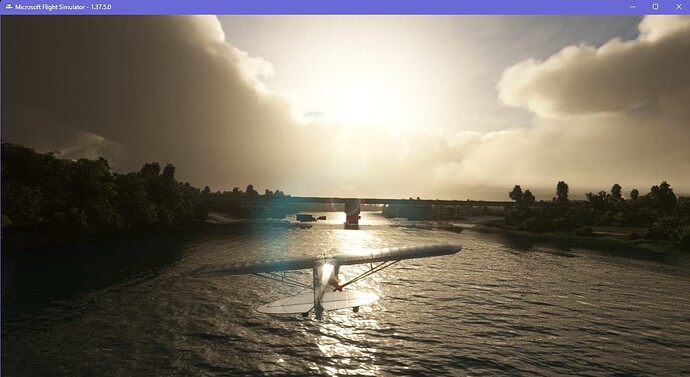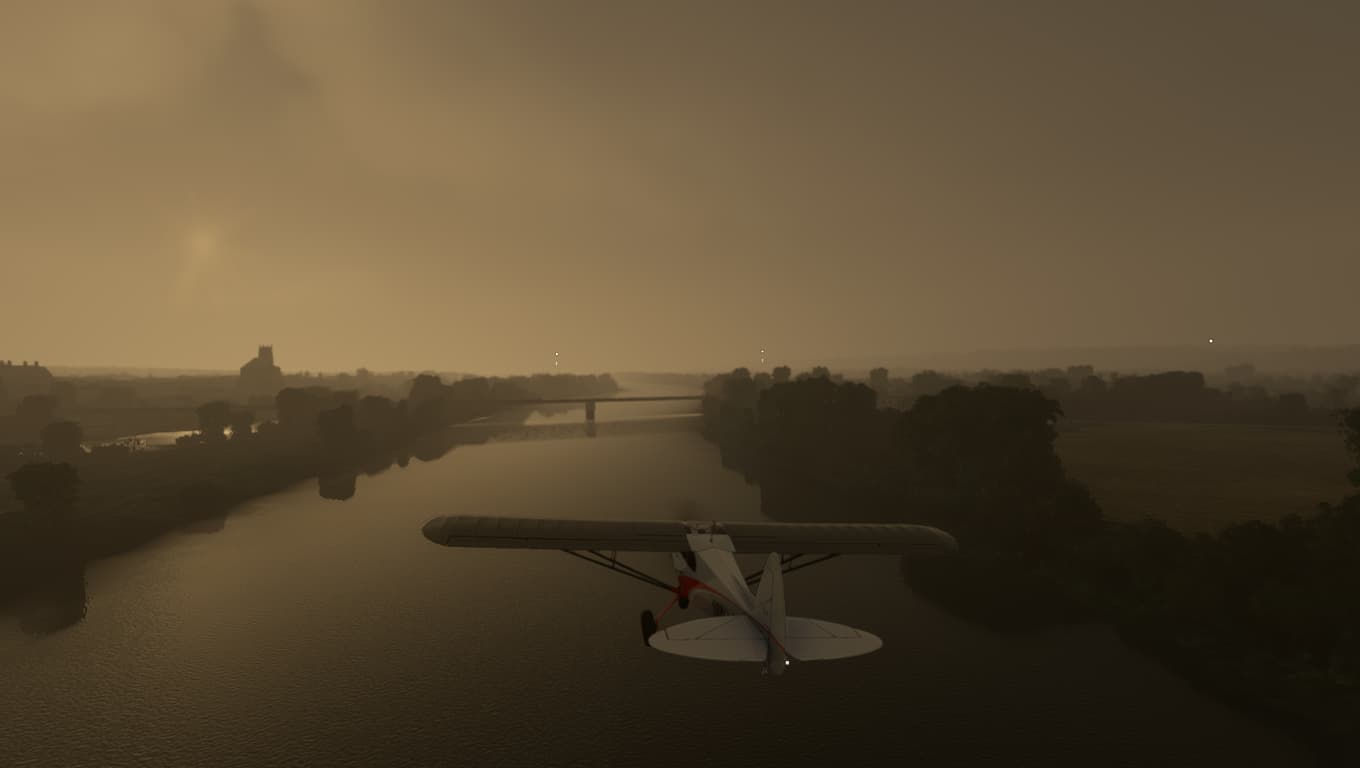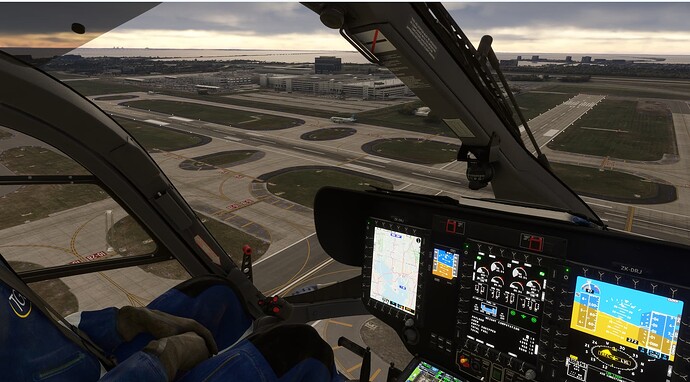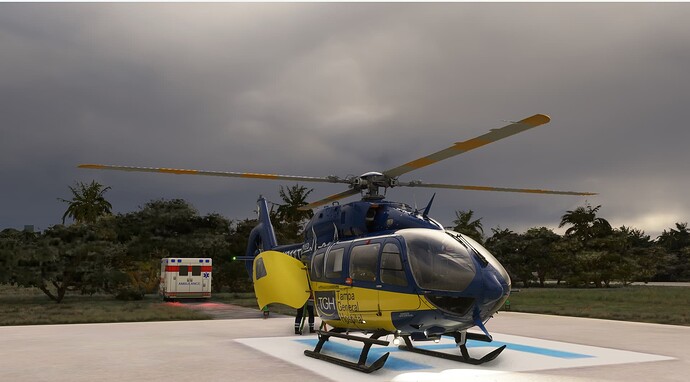Today Pee-Wee and I toured Vermont and upstate New York in the vicinity of Lake Champlain and the Adirondacks. In keeping with the spirit of our previous two flights, we sought abandoned Atlas nuclear missile silos in the area west of Burlington, Vermont and southwest of Plattsburgh, New York. We also spent time around Lake Placid, a mining town turned holiday retreat and the site of two Winter Olympic Games. More on that, and Pee-Wee’s miraculous connection with the 1980 Games, later.
We jumped into N280VF, our favorite JPL Cessna 152 in classic red paint (thanks again, Waffler11) and started at RHPAviation’s excellent rendition of Burlington International Airport (KBTV, available on flightsim.to). Once again, we used a Floyd’s Epic Clouds weather preset and time travelled to the first week of June. No snow or overcast skies for us! 
We parked at the employee-owned Heritage Aviation FBO on Burlington’s south ramp. Since we weren’t planning on any soft field landings, we left 280VF’s pants on today. Thankfully, virtual pilots parking at this FBO don’t have to pay the exorbitant overnight and ramp fees, or $6.60 for a gallon of 100 Low Lead! We departed off Runway 19 and turned southwest toward our first target: missile silo 556-4, located off State Route 22 on Lake Champlain’s western shore near Willsboro, New York (population 2,025).
Having flown Martin B-26s over Europe during World War 2, the 556th Strategic Missile Squadron was America’s first such unit when it began training with Northrop SM-62 Snark GLCMs at Canaveral Air Force Station in the late 1950s. Originally scheduled to transfer to Presque Isle Air Force Station in Maine, the 556th instead became the final SMS activated at Plattsburgh Air Force Base in October 1961, from where it operated the Convair SM-65F Atlas (“Atlas-F”) until Summer 1965.
Twelve silos were built in a ring approximately twenty to forty miles from Plattsburgh: ten in New York and two across Lake Champlain in Vermont. We decided to focus on only a few locations today, specifically Silos 556-4 through -8.
Unlike the sites we looked for during yesterday’s flight around the Kola Peninsula, Silos 556-4 through -7 are clearly visible in MSFS, and their physical conditions vary considerably. Site 4 was used as a residence and art gallery and is currently under restoration by a private owner. Site 5 serves as a laboratory for defense contractor Unconventional Concepts, Inc. and is the most historically intact. Site 6 appears to be vacant and, like most of the other Atlas-F silos nationwide, filled with ground water. Site 7 is owned by a local farming family that once attempted to use the facility as a brewery, and who tragically lost a family member in the process.
After photographing Sites 4, 5, and 6, we turned southwest toward Lake Placid and followed State Highway 86 past Whiteface Mountain and over High Falls Gorge, both of which are clearly visible in MSFS.
We then descended and circled around Lake Placid, approaching the town from the north.
Incorporated in 1900 but occupied for several decades prior, Lake Placid became a fashionable resort for the wealthy and a popular destination for winter sports enthusiasts. The Winter Olympic Games were held here in 1932 and returned in 1980, making Lake Placid one of only four cities worldwide to host the Games twice.
It was in the Olympic Center near the center of town (the large grey building in the center of the photo, above the oval speed-skating track) that the upstart American hockey team defeated its Soviet opponents on February 22, 1980 in a game that would be forever known as the “Miracle On Ice.” (In an interesting twist, we realized some years ago that Pee-Wee was born during the last five minutes of that game. She believes that the young Americans absorbed all the world’s good luck in those final minutes, which explains her lack of the same!  )
)
Here’s the MSFS rendition of the MacKenzie Intervale Ski Jumping Complex south of town and just west of the Lake Placid Airport (KLKP). The two concrete pillars supporting the 100 and 128-meter jumps are depicted as transmission masts  They at least gave us a sense of the towers’ heights: the sectional chart shows their elevation to be 2,162 feet, more than 400 feet above the neighboring airport. (There’s a reason I have zero desire to ski jump!)
They at least gave us a sense of the towers’ heights: the sectional chart shows their elevation to be 2,162 feet, more than 400 feet above the neighboring airport. (There’s a reason I have zero desire to ski jump!)
From Lake Placid we followed Highway 86 west to Lake Saranac, another mountain resort town popular with the wealthy and outdoorsy. During the late 19th Century, the village’s clean air brought an influx of patients suffering from tuberculosis and other breathing difficulties, and to this day many of the quaint “cure cottages” in which they convalesced are visible throughout town.
We turned north from Saranac toward Silos 556-7 and 556-8. Site 8 near Redford, New York was partially rehabilitated into a private residence. Some floors of the underground control center are habitable, and a quaint log cabin sits atop the entrance. The silo itself lies beneath a large asphalt pad that serves as the ramp for the adjoining private airstrip, known as the Adirondack Airpark (NY17). The cabin is directly below 280VF in this photo.
From Site 8 we turned back east and overflew the original Plattsburgh Airport, long since closed but technically still “open” in MSFS, although there are no facilities save for a beacon and all runways are painted with yellow “X’s.” A few miles further south is the former Plattsburgh Air Force Base with its single 11,759-foot runway and massive ramp, once host to Strategic Air Command bombers and tankers. Plattsburgh and nearby Pease AFB were unique in operating SAC’s few General Dynamics FB-111A nuclear bombers. The field’s layout is extremely basic, even lacking the “Christmas tree” alert pad like other SAC bases. Today the only large aircraft that operate here are FedEx and UPS freighters and passenger-carrying Airbuses of Allegiant Airlines. The large weapon storage area on the field’s west side (visible in the center right of this photo) is used by Paramount Enterprises International for storing and transporting high explosives and other HAZMAT cargoes.
Here we are crossing Lake Champlain southeastward toward Burlington. Covering an area of approximately 490 square miles with a maximum depth of 400 feet, and with connections to both the St. Lawrence Seaway and the Hudson River, Champlain is often called the “Sixth Great Lake,” a title that was official for eighteen days in March 1998 (now that’s a long story….). For you modern aerospace and military geeks, the lake gave its name to CV-39, one of the many Essex-Class aircraft carriers built by the United States during World War 2. On May 5, 1961, Lake Champlain recovered astronaut Alan Shepard after his historic first flight aboard Freedom 7. She appeared in the leading role again in 1965, bringing astronauts Gordon Cooper and Pete Conrad aboard after their record setting 8-days in Earth orbit during Gemini V. A new Lake Champlain, the Flight II Ticonderoga-Class cruiser CG-59, is currently in service, although she’s up for decommissioning soon.
RHPAviation’s Burlington scenery is quite good, boasting custom buildings and an accurate layout. We were most impressed with the “smoothness” and accuracy of the signage and ground markings. The Air National Guard ramp is on the far side of the field, and unfortunately lacks any detail. There’s another scenery package that adds F-35s to that ramp, but I’m uncertain if the two play nicely together! The “Green Mountain Boys” of the 134th Fighter Squadron are the first Air National Guard pilots to operate the new Lightning II fifth-generation fighter in the vital Suppression of Enemy Air Defenses (SEAD) role. They’re modern day “Wild Weasels,” possibly the bravest and most mentally unstable group of pilots to ever ply the blue yonder! 
We were airborne today for just over 90 minutes and burned 7.8 gallons.
What a beautiful area of the country, with rolling hills, high mountains, lush green forests, and abundant streams, rivers, and crystal clear lakes. I suspect the other nine months of the year are different!  It’s difficult to imagine that such a naturally peaceful place was once home to the world’s most powerful strategic arsenal and was probably earmarked for nuclear devastation by the Soviet Union.
It’s difficult to imagine that such a naturally peaceful place was once home to the world’s most powerful strategic arsenal and was probably earmarked for nuclear devastation by the Soviet Union.
That’s all for today. I hope you learned something. We certainly did! We’re already planning a trip to see the real thing this summer. Have a great night! 

